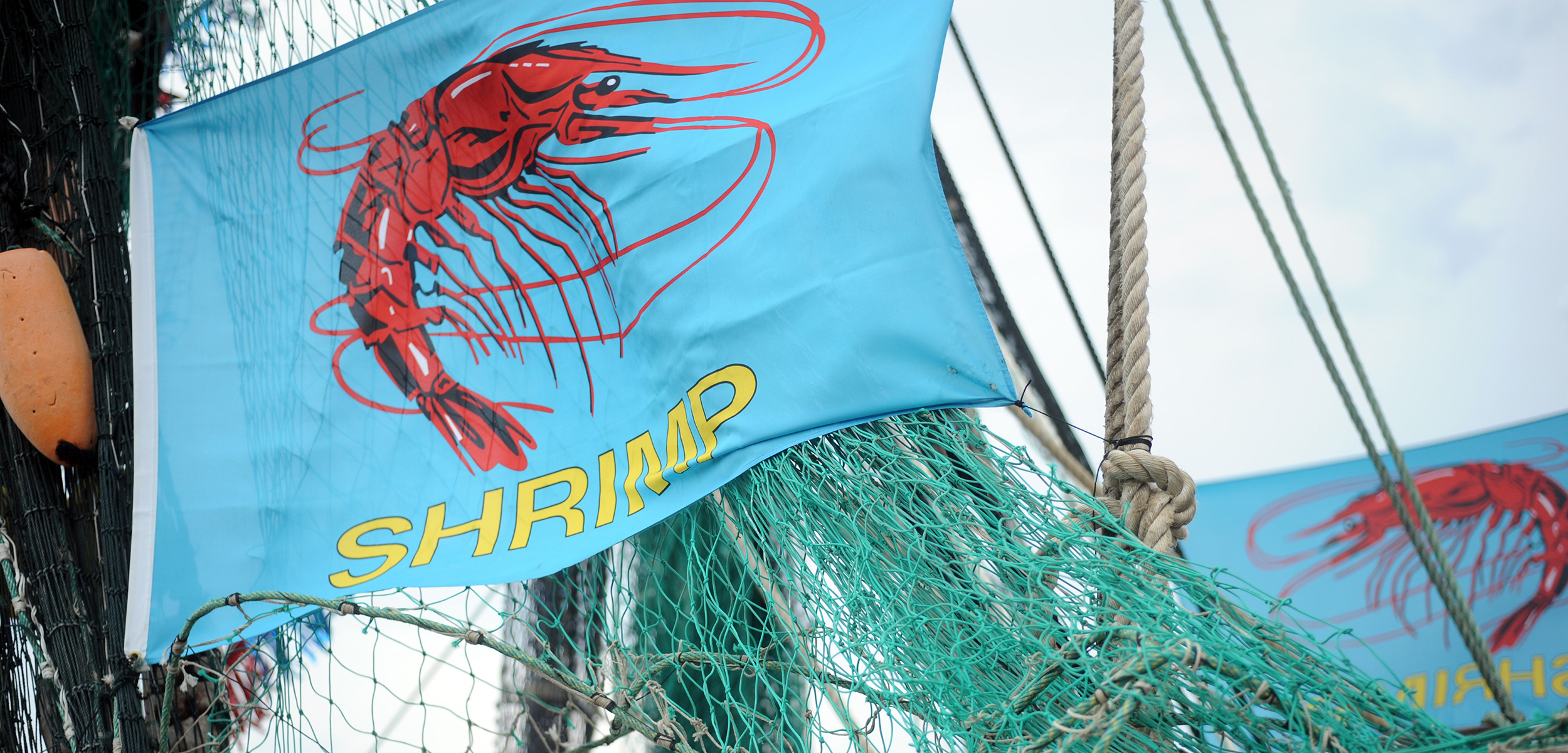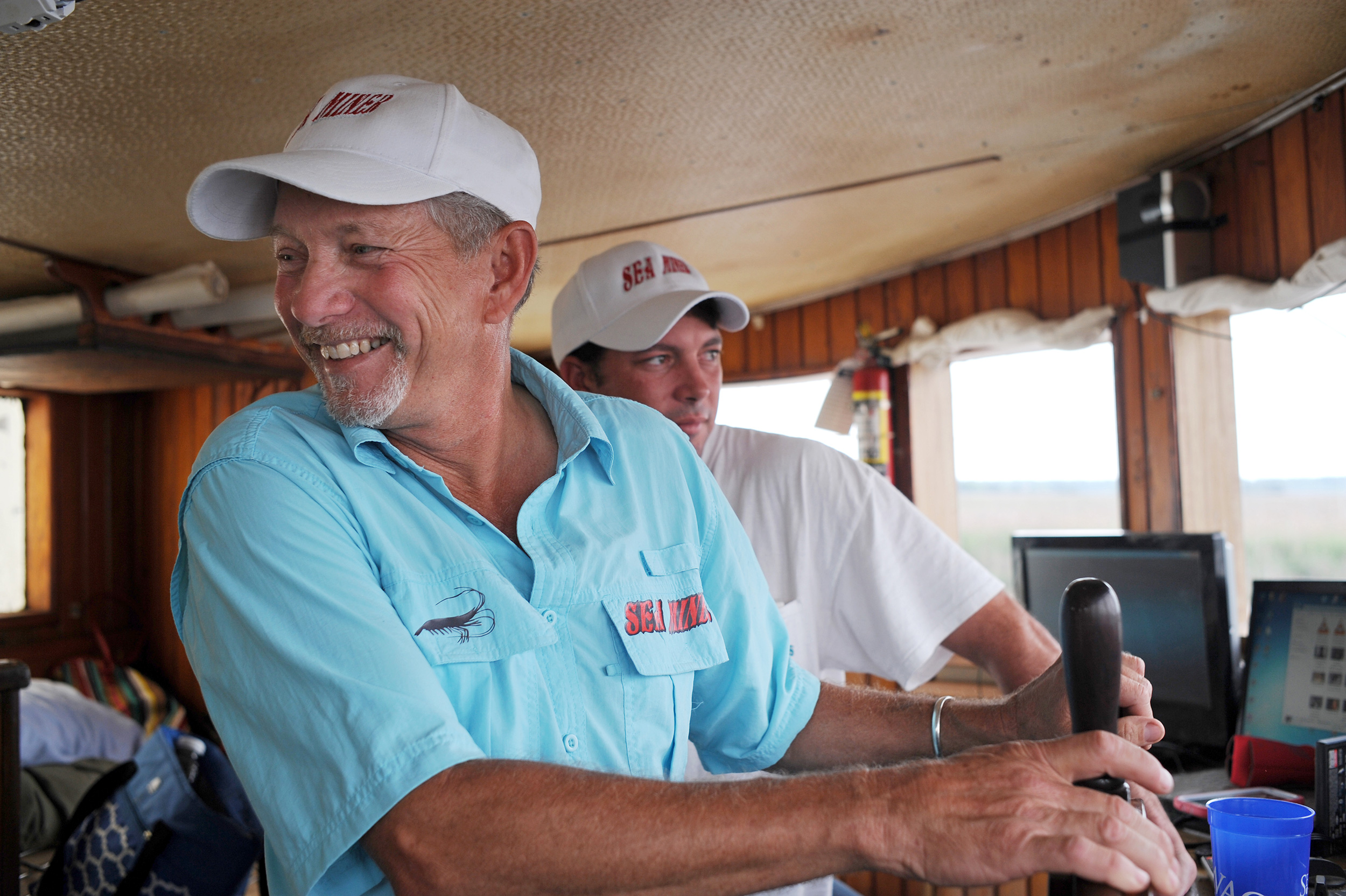The Blessing & The Shrimp
Faced with declining returns, hardy Georgia shrimpers hold tight to their traditions of pageantry and prayer.
Article body copy
Robert Todd, a 26-year-old, fourth-generation Georgia shrimper, stout and blue eyed, climbs the mast of his family trawler, Sundown, to dress the outriggers with shiny gold and blue ribbons. A Georgia state flag is tied to the bow, alongside the American Stars and Stripes and a host of fluttering, little blue flags featuring lively red shrimp. A large wooden cross rises over the wheelhouse. Signs that read “I ♥ shrimp” and “Safe Harvest Requires Incredibly Meaningful Prayers” (SHRIMP)—painted on bed sheets by Todd—will be added later. A few days ago, he painted Sundown’s mast, dangling high above the deck between the two outriggers, one foot planted on each as if he was doing a split, with a brush in one hand and a safety rope in the other. “If you fall, you’d be pretty lucky if you walk away with your life,” he says, but that’s what it takes to keep a boat shipshape. Plus, Sundown, a 20-meter-long, white-hulled trawler with black rigs, is about to lead a parade, so it has to look its best.
Together with his father, brother, mother, and cousin, Todd decorates Sundown for the Blessing of the Fleet, a festival that takes place in Darien, Georgia, over a three-day weekend every April before the shrimping season begins. On another dock a few kilometers away, Howell Boone, a 52-year-old, third-generation shrimper also dresses his trawler, Sea Miner, in festive gear. Captains and crews on every dock in the local towns of Darien, Valona, and Belleville hammer, drill, scrub, and drape their vessels in regalia for the blessings that the town priests and preachers will bestow from the Darien River Bridge on Sunday afternoon. In a friendly rivalry, the shrimpers compete for first prize, but what they really need, by God, is a blessing for a good season. The harvests have been abysmal for the past few years. The 2013 season was so bad that the shrimpers applied for disaster relief from the government. They’re still waiting for an answer.
The shrimp harvest was once so bountiful that a few good weeks a year could sustain a family and its boat. But “shrimp landings”—the quantity of shrimp fished out of the sea—have plummeted in the past decade because of a mysterious infection that turns the crustaceans’ gills black. Before that, shrimpers could amass over 200 kilograms (440 pounds) of catch a day during the best season—late summer to fall. In recent years, they were lucky to net half of that, and on some days they caught nothing at all. Even when the nets came up full, they landed lethargic, soft-shelled shrimp with the ominously named malady “black gill.”
Afflicted shrimp are safe for humans to eat—scientists call black gill a condition, not a disease—but the paltry catches cost many families their livelihoods. In 1979, the State of Georgia issued 1,471 shrimping licenses; in 2013, it issued fewer than 250. The president of the Georgia Shrimp Association (GSA), Richard Puterbaugh, sold his boat a few years ago, and many others did the same. Still, some are sticking with it because shrimping is in their DNA; it’s a familial identity they refuse to relinquish. The Boone family has been shrimping for so long that the path leading to Sea Miner’s home berth is called Boone Dock Road—after Grandpa Tessie Toys Boone, who built the dock in the 1960s. In the 1970s, Howell’s father, Sinkey Boone, dismayed at the amount of by-catch produced by the industry, invented the turtle-excluder device called The Georgia Jumper, which lets sea turtles escape from nets and which all shrimpers are now required to use. “We [shrimped] for three generations,” Howell says. “But the black gill is wiping us out.” As another old-time shrimper says, “black gill is like a cancer to us.”
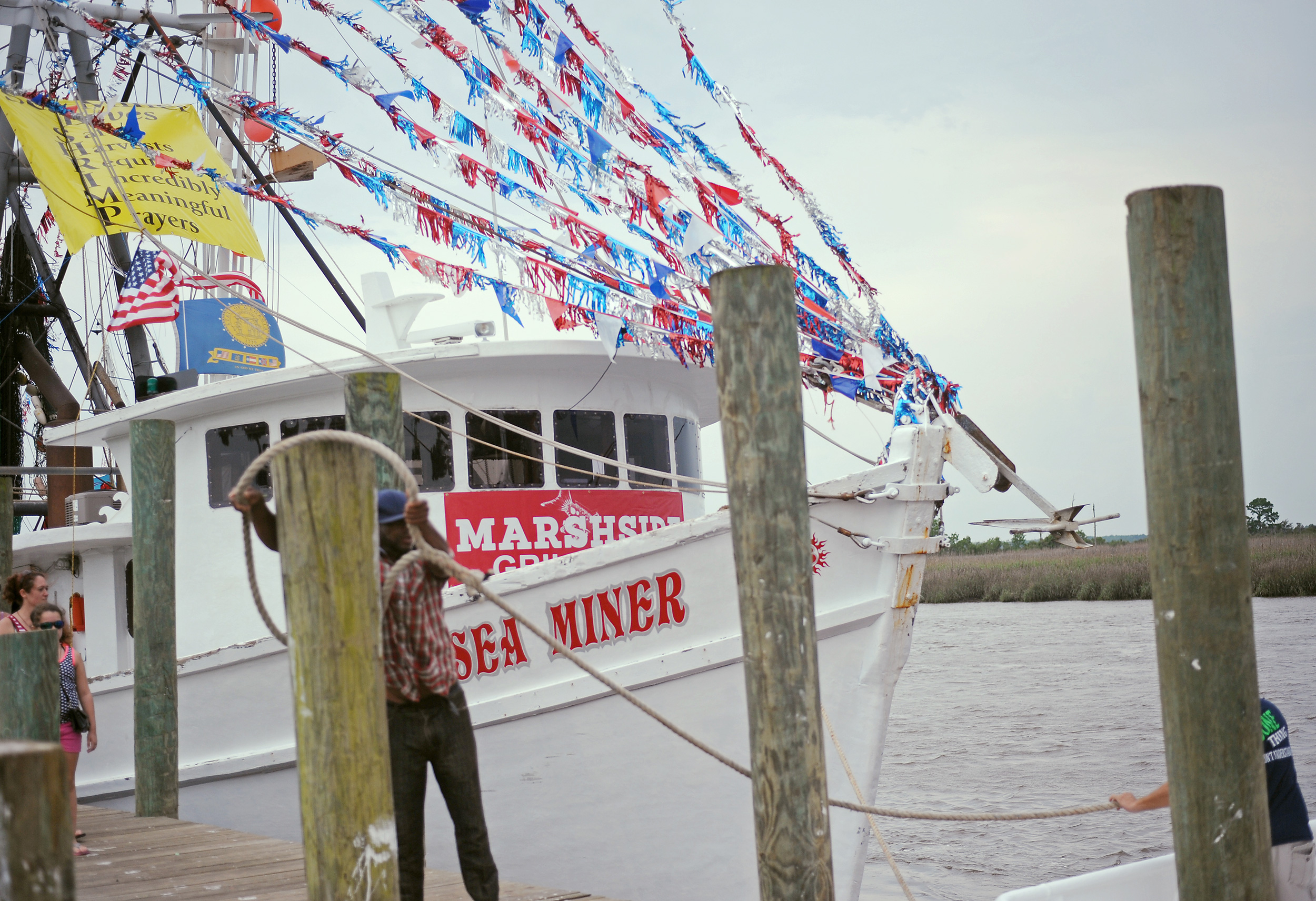
Sea Miner, Georgia shrimper Howell Boone’s boat docked at Boone Dock Road. Photo by Sarah Beth Glicksteen
Black gill doesn’t directly kill the shrimp, but it makes it an easy dinner, says Marc Frischer, a microbiologist at Skidaway Institute of Oceanography in Savannah, Georgia. Shrimp with black gill tire more quickly—perhaps because of the infection or due to oxygen deprivation from the damaged gills—and become easy prey. A shrimp with black gill may also molt more often. Whenever an infected shrimp outgrows its exoskeleton, shedding it for a new one with healthy white gills, the infection soon returns and the gills again turn black. To get rid of the damaged gills, shrimp molt excessively, which wears them out, increasing their risk of being eaten. “A molting shrimp is a sitting duck,” Frischer says.
Exactly what causes black gill is an enigma that has scientists glued to their microscopes. One prominent hypothesis states it’s a ciliate parasite—a single-cell eukaryotic organism with hair-like organelles called cilia—that burrows through the shrimp’s exoskeleton. The crustacean’s immune system triggers a response, and a barrier forms around the parasite, dissolving it. In the process, the gill tissues oxidize and turn into black scars, impeding the shrimp’s ability to extract oxygen from the water. It’s as if the little creature has chronic bronchitis. On his screen, Frischer points to a dark circle surrounded by still-healthy pink tissue. “This little round thing is our ciliate,” he says, but he isn’t sure what ciliate it is. A diverse species, ciliates are tough to identify. As a single-celled organism, its DNA is difficult to sample. To further complicate the process, ciliates’ genomes are more complex than humans’. When Frischer’s team identified the suspected culprit as 94 percent genetically similar to a known species, Hyalophysa chattoni, it mystified things further. H. chattoni is a commensal (neither helping nor harming) ciliate, which normally lives on grass shrimp without damaging its gills. “So we are not sure if it’s exactly that, or maybe it’s a new species, or maybe it acquired some kind of a new gene—something that makes it virulent,” Frischer says.
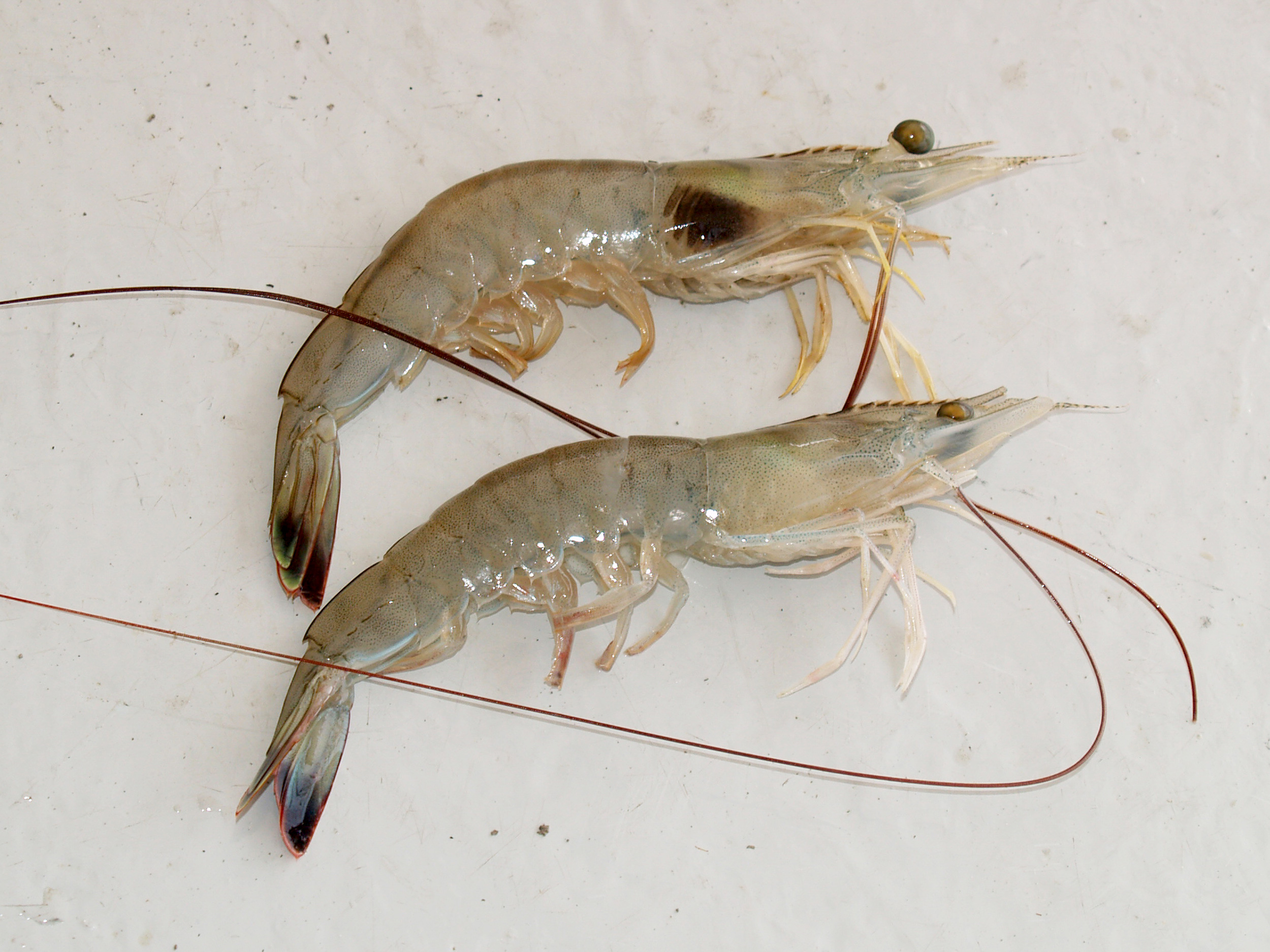
A healthy shrimp compared to one with black gill. Photo courtesy of University of Georgia Skidaway Institute of Oceanography
Shrimpers have pondered a few theories: it’s because of pollution; it’s because of the nuclear power plant up the Savannah River; or, the parasite arrived on imported Asian tiger shrimp or from South Carolina shrimp farms. Scientific research eliminated each folk theory. The shrimp farms existed long before black gill showed up for the first time, says Jim Page, a biologist at the Georgia Department of Natural Resources. Each year that the malady erupts, black-gill shrimp appear simultaneously from North Carolina to Florida with no specific hot spots, refuting the pollution-source hypothesis. It’s also a seasonal plague, not unlike a flu, that usually starts in July or August, lasts through November, and occasionally even as late as January, but disappears come spring. Even more puzzling is that black gill showed up for the first time in 1996 and came back every year except 1997, 1998, and 2001—and no one knows why.
Black gill or not, Darien’s Blessing of the Fleet must go on. The blessing celebrations—which still take place throughout the world—were born in fishing communities of the Mediterranean and ritualized by Catholics centuries ago. They serve as a direct plea to the heavens to assure mariners a safe and prosperous year. When Italian and Portuguese immigrants began to settle in the United States in the 1800s and 1900s, they brought the tradition with them. The fishing industry’s safety has improved greatly since the Second World War, but working heavy equipment on a boat rocked by rough seas far away from land is still perilous, so shrimpers take both parts of the blessing seriously. “We ask the Lord for a safe and bountiful season,” says Morris Butler, a 58-year-old Sundown crew member and this year’s festival grand marshal. “God answers all prayers,” he adds. “Yes, we do believe it. Absolutely.”
Like endangered species pushed toward extinction by a more powerful competitor—big trawling companies or fish farms, for instance—fishing communities seek ways to survive, even if it’s just symbolically, through communal festivals. These celebrations act as a “social glue” that binds people together and re-emphasizes their work and purpose. As the business of fishing declines, festivals often grow and intensify, sometimes shifting focus, occasionally becoming tourist attractions that overshadow the actual industries they were founded to celebrate. In her thesis on the Blessing of the Fleet festivals in the American south, anthropologist Audriana Hubbard writes that in Morgan City, Louisiana, the original Blessing of the Fleet event, which started in 1930, had metamorphosed into the Shrimp and Petroleum Festival by 1967. Today, the city’s boat parade consists of more tugboats than trawlers, but the venue draws 140,000 visitors, resulting in $8.5-million of economic impact. And in Biloxi, Mississippi, where casinos and resorts pushed out the fishing-boat docks, the festival lets people reify their identity by celebrating their past; the blessing itself is of minor importance.
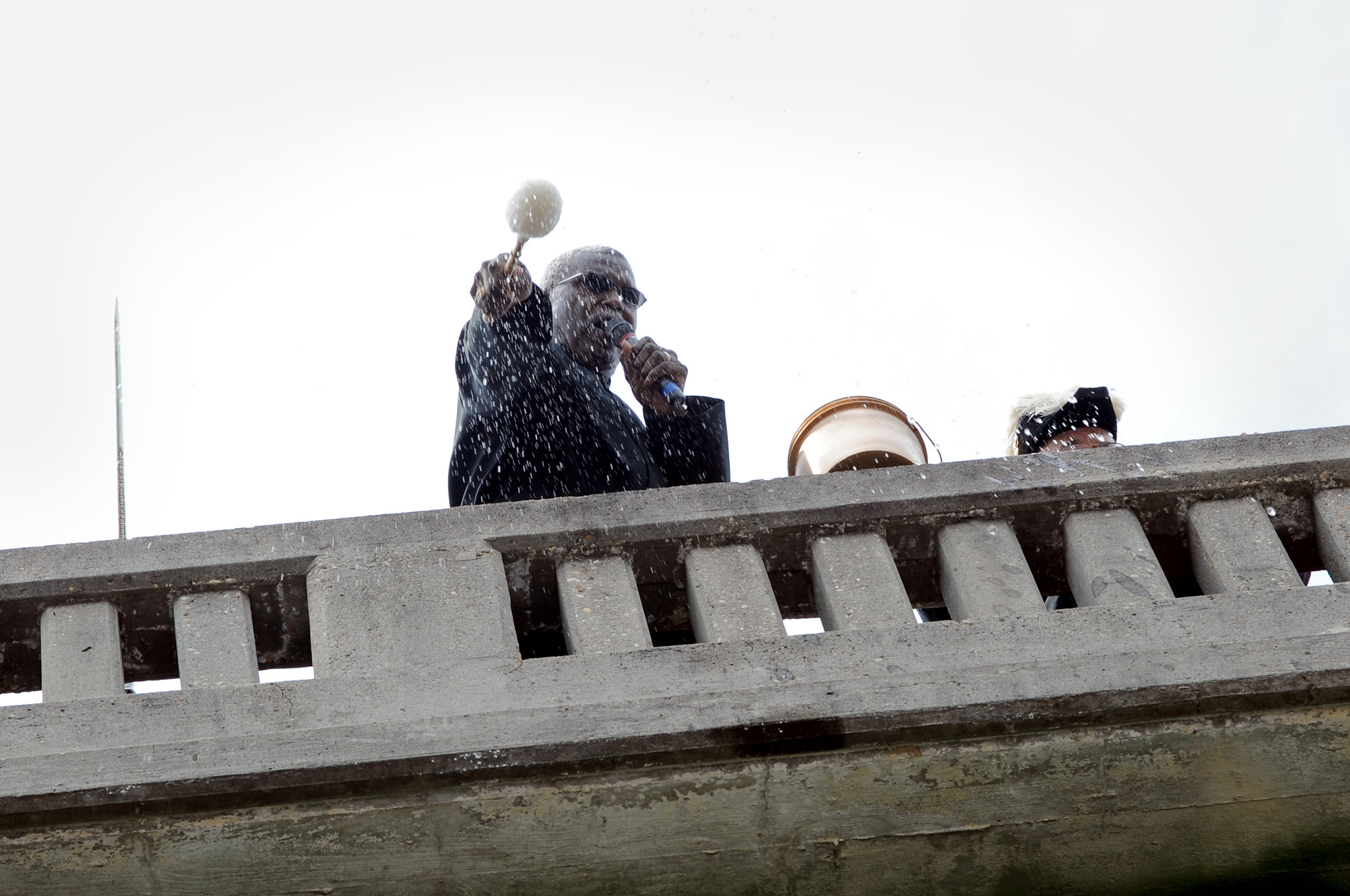
A priest blesses the shrimp boats from a bridge during the Blessing of the Fleet in Darien, Georgia. Photo by Sarah Beth Glicksteen
For those still fishing, however, showing up at the festival is a statement of perseverance—they fish, therefore they are. But as fisheries dwindle worldwide, more festivals are less about active piscators and more about reminiscence of the old glory days, says Rob van Ginkel, associate anthropology professor at the University of Amsterdam. “Instead of operating fishermen, you get fishermen who tell stories in the museums,” he says. People look at images and hear old stories from the past—and they can even see the vessels—but it’s as if the real fishermen are put under glass like rare exhibits.
The Darien festival gives the local economy a boost on that one weekend, attracting about 30,000 tourists and resulting in $800,000 to $1.8-million of economic impact, but real working shrimp boats compete in the parade and seek the blessings. For now at least, local shrimpers have avoided becoming relics.
Blessings won’t banish black gill, but science might not either. Stephen Landers, who studies marine parasitology at Troy University in Alabama and is examining Frischer’s shrimp samples using electronic microscopy, is skeptical about the H. chattoni verdict because that ciliate has never caused pathology. But many other things can.
For example, a couple of different ciliates are known to infect other shrimp species that live in nearby habitats, Landers says. But, he explains, the culprit could also be a non-ciliate parasite, such as another type of protozoan, or it could be a viral, fungal, or systemic infection, caused by something shrimp ingest, which manifests on the gills. “There are a lot of suspects,” he says. Landers is examining Frischer’s gill-tissue samples in his own lab and at Auburn University’s Research Instrumentation Facility, but it’s a meticulous process because for electron microscopy he slices tissue at a 10th of a micron. He may get through only 30 microns of tissue a day—that’s one-fifth the thickness of a penny—but he hopes to have the answer this year.
Even if scientists catch the perpetrator of black gill, they can’t exterminate it. In closed systems like aquariums, parasitic infections are treated with drugs. But in the ocean, parasites roam freely—even if you kill them in one area, they’ll just swim back from another. Shrimp aren’t likely to perish because they reproduce annually and are very fecund, Frischer says. But shrimpers, who face the same economic challenges as other fishing communities worldwide, are another story. “I don’t think we’re going to extinct the shrimp,” Frischer says. “But we may extinct the industry—not only because shrimp have gone away, but also because the market has changed so dramatically.”
Decorating a boat to win takes time and wisdom, Robert Todd says. The adornments should be unique. They should be uncluttered. The signs must be legible from a distance so that the spectators sitting on the docks splashing their feet in the brackish water can read them easily. By the time Sundown is ready, weekend festivities are in full swing. The vendors have erected tents near the bridge, selling everything from handmade jewelry to food to bug spray. Antique cars parade through town. Bands play and people dance on the riverbank.
On Sunday morning, the entire Todd family, dressed in matching blue T-shirts with a red shrimp logo, sail from their dock in Valona to Darien, where grand marshal Butler climbs onboard. As a final touch, they hang two large banners, each featuring a boat with a cross, and at 2 p.m., Sundown, gleaming white in the sunlight with shiny ribbons and billowing canvasses, leads the parade.
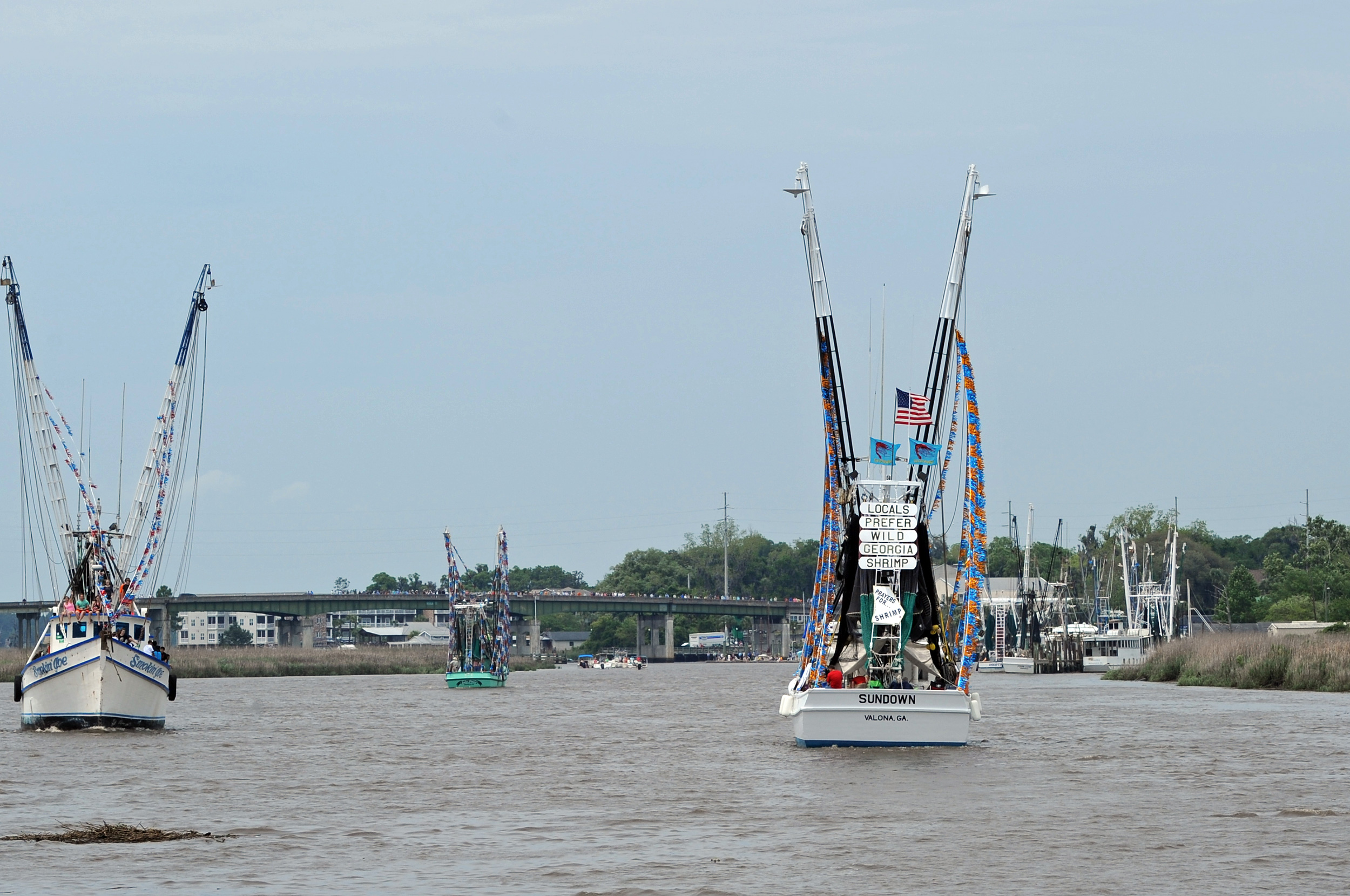
Sundown, the Todd family’s boat, is all gussied up as it leads the 2015 Blessing of the Fleet parade in Darien, Georgia. Photo by Sarah Beth Glicksteen
Grandpa Bobby Todd built Sundown in 1973, when shrimpers landed six to seven million kilograms (14 to 16 million pounds) a season, selling their catch for $15 a kilogram ($7 a pound), says Georgia’s fishing historian and author Buddy Sullivan. Back then, families wanted their children in the business—which was the case for Howell Boone. “I was seven when I started going out on my uncle’s boat and daddy’s boat and granddaddy’s boat,” he recalls. His grandparents paid the kids a dollar to pack a box of shrimp, which added up to $15 an hour at a time when the minimum wage was $2.50. At 12, Boone was “heading shrimp”—cutting off heads—as fast as adults, sometimes making $1,000 a week. And while he left home at age 17 to train as a pipefitter, Boone didn’t like working set hours, so he returned home and bought a trawler.
By 1989, when Robert Todd was born, shrimpers were landing half of what they used to catch in the 1970s. And as the worldwide shrimp-farming industry flooded the market with cheap shellfish, prices fell to $4.50 a kilogram ($2 a pound) while fuel costs doubled, devastating communities that had few other job prospects. To describe the level of self-employed fishermen’s vulnerability to economic fluxes, anthropologists invoke historian Richard Tawney’s famous metaphor of a “man standing permanently up to his neck in water, so that even a ripple is sufficient to drown him.” The farmed-shrimp era was more than a ripple. “It was like a colossal wave,” says anthropologist Ben Blount, who has extensively studied shrimpers. That wave swept away many businesses and washed away years of savings. Robert’s father, Fred Todd, puts it plainly: “I can make business with $7-a-pound-shrimp price and $2-a-gallon fuel. I can’t do it with a $4-a-pound shrimp and $4-a-gallon fuel.”
But shrimpers are “a resilient bunch,” says John Wallace, the GSA’s marketing director. To compete against the farms, the GSA advertised the gourmet appeal of the region’s chemical-and-antibiotic-free catch. And in 2004, the GSA created the “Wild Georgia Shrimp” label and targeted niche markets, including high-end restaurants, locally and out of state. It was a very innovative idea, Blount says, because historically, shrimpers typically sold wholesale.
The smaller, more isolated communities—outside big centers and away from the front lines of the industry—stick with fishing despite all ills, preserving and continuing their traditions and lifestyle by whatever means. “In a way, they’re more resilient,” says Blount. In recent years, for instance, some Darien shrimpers, including Boone, have adapted their gear to harvesting jellyfish, a seafood popular in Asia and rising in profitability. Still, they face higher economic risks. “At the same time, they are more vulnerable because they are unidimensional. They rely so heavily on [fishing],” explains Blount.
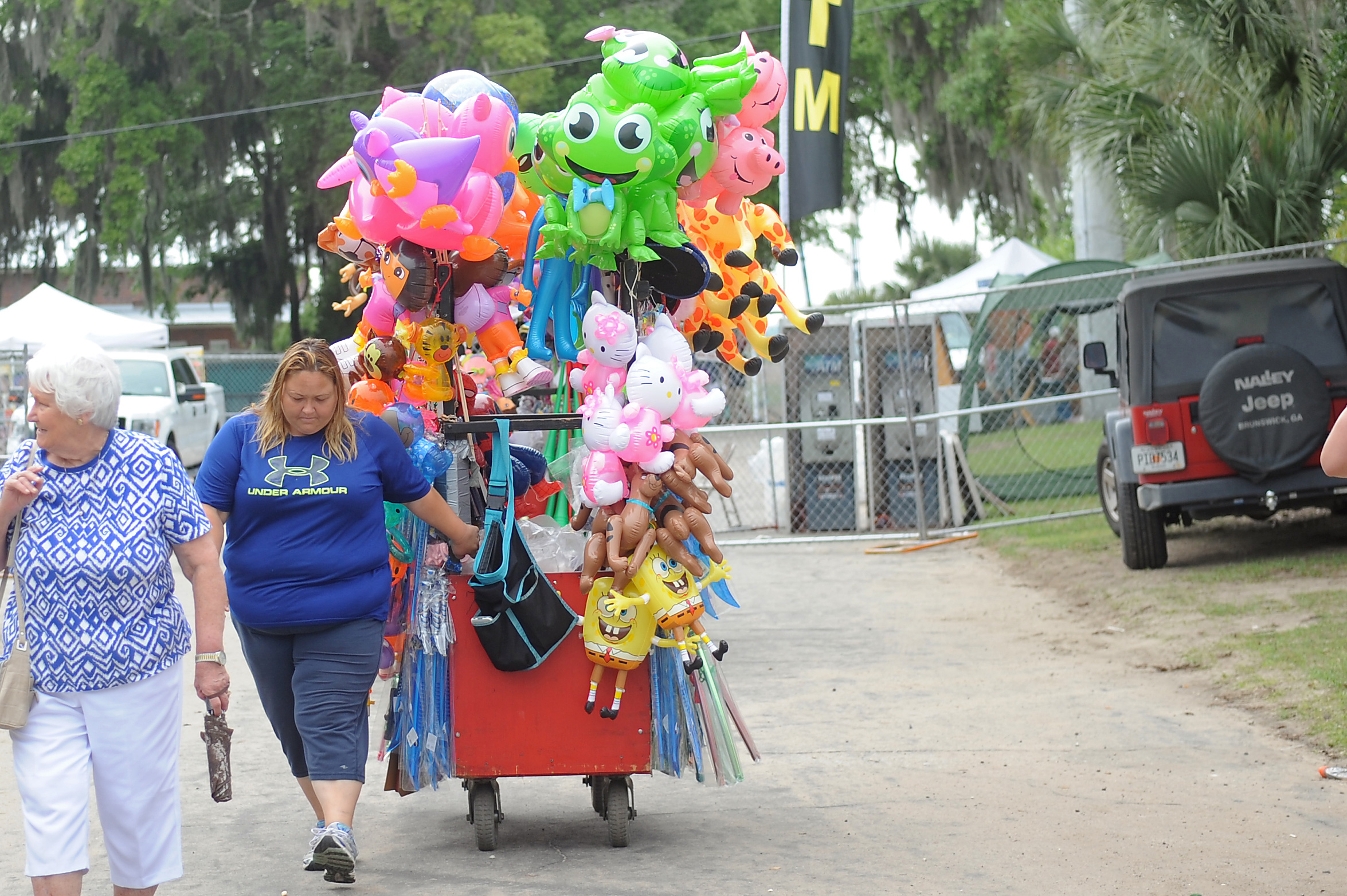
The Blessing of the Fleet attracts about 30,000 tourists, giving Darien’s economy a boost. Photo by Sarah Beth Glicksteen
Since shrimping became such an unreliable way to make money, families have tried to steer their children away from the sea. Fred Todd wanted Robert in college. “I waited for a long time before I brought him on the boat to shrimp,” Fred says—and then he purposely did it on a rough stormy day and wouldn’t go home even when Grandpa Bobby nudged, feeling sorry for his grandson. “I was watching the waves going up over the tips of the outriggers, and I was sick as a dog,” Robert recalls. But growing up in a fishing family, he had already absorbed lessons of perseverance. “It made me want to do it even more.”
Fishing is the second most dangerous profession in the United States, bested only by forestry when it comes to fatalities. Winches, cables, and other equipment snatch off people’s limbs. Boats break, leak, burn, and sink. Sundown caught fire twice, once from lightning and once from a burst fuel line when father, grandfather, and four-year-old Robert were taking it home after maintenance. They made it to the dock on the second engine with fire raging underneath the very deck they stood on. Between bad weather, bad catches, and bad equipment, children learn perseverance early on, because, no matter how prepared, fishermen face unexpected challenges all the time. Perseverance is why Robert intends to juggle two careers, as a fisherman and as a college teacher, which will give him a second income source. While finishing his master’s degree in communications, he’ll start teaching this fall, but he goes shrimping on weekends and in the summer. “I have to obey my father’s wishes not to go into the industry—full time,” he says. “But I love it enough to not leave it alone.”
Darien’s Blessing of the Fleet is essentially a celebration of this grit—of the fact that the shrimping community is resilient: they still venture out to sea; they still bring in the catch. “And there’s a little bit of sunshine on the horizon,” Blount says. Last year, a condition called “early mortality syndrome” hit shrimp farmed in Asia particularly hard, forcing shrimp prices to a record-breaking $18 a kilogram ($8 a pound). These diseases are likely to continue to impact shrimp farmers, Blount thinks, and local fishermen might make a comeback, focusing on the artisanal niche—black gill, in some ways, elevates the value of healthy wild shrimp—much like family farms have done.
Climbing aboard on Sunday morning to sail from Valona to Darien with the rest of the family, Grandma Pat Todd steps up on a wooden block and swings her legs over the hull. “I am very blessed,” she says, about being so agile at 76—and then gives a proud recap of Sundown’s history as friends and family load folding chairs and trays of food. “My husband built this boat,” she says, a radiant smile on her face as she stands underneath the flapping shrimp flags. “So it was our boat, and it’s now my son’s boat.” And as Robert helps his grandmother over the hull, he finishes her boat heritage account with his own ending. “One day,” he says, “it will be mine.”
Sundown, which won first prize for its decor this year, may see many more seasons.

